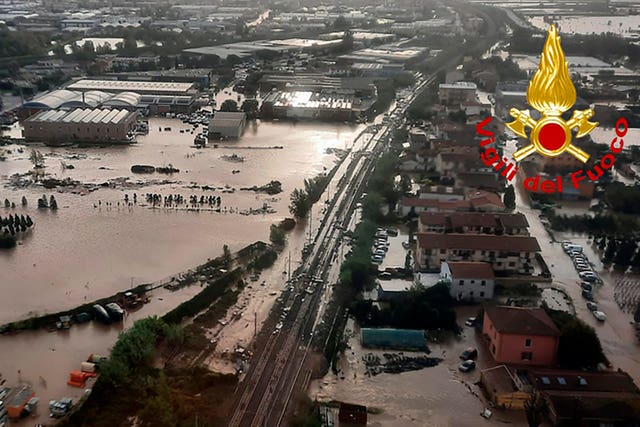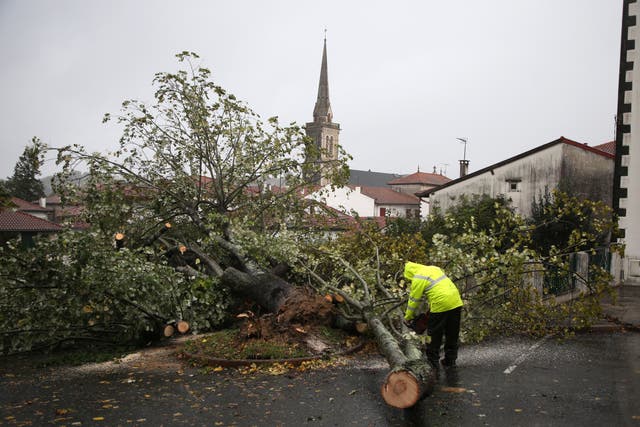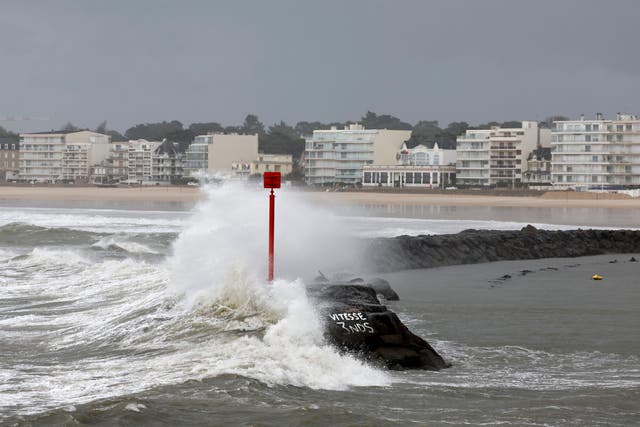Death toll rises in Europe as Storm Ciaran arrives in Italy with record rainfall
At least five people were killed in Italy, bringing the storm’s death toll in western Europe to 12.

Record-breaking rainfall has produced floods in a vast swathe of Tuscany as Storm Ciaran pushed into Italy on Friday, trapping residents in their homes, inundating hospitals and overturning cars.
At least five people were killed, bringing the storm’s death toll in western Europe to 12.
Italian Civil Protection authorities said nearly eight inches of rain fell in a three-hour period, from the city of Livorno on the coast to the inland valley of Mugello, and caused riverbanks to overflow.
Tuscany governor Eugenio Giani said five people died in the storm, which dumped an amount of rainfall not recorded in the last 100 years.
“There was a wave of water bombs without precedence,” he told Italian news channel Sky TG24.
Climate scientists say human-induced climate change has led to heavier rainfall during storms such as Ciaran, often resulting in more severe damage.

The dead in Tuscany included an 85-year-old man found in the flooded ground floor of his home near the city of Prato, north of Florence, and an 84-year-old woman who died while trying to push water out of her home in the same area, according to Italian news agency ANSA.
The other victims were a couple who had been missing near the town of Vinci and a person in the province of Livorno.
At least one person was missing on Friday in Tuscany, along with an off-duty firefighter reported missing in the mountains of Veneto, north of Venice. Other regions were on high alert and authorities warned that the storm was heading towards southern Italy.

As the storm moved on, it left hospitals flooded in Italy’s Pisa and Mugello. Throughout Tuscany, train lines and roads were disrupted and schools were closed.
The mayor of Prato expressed shock at the force of the flood that devastated the city overnight. By early Friday, residents were working to clean the damage.
“A blow to the stomach, a pain that brings tears. But even after an evening and night of devastation, we are pulling up our sleeves to clean and bring our city back to normality,” mayor Matteo Biffoni posted on social media.

“The psychological fear is high, considering that tomorrow is the anniversary of the 1966 flood,” Mr Nardella said, recalling a flood that killed 101 people and damaged or destroyed millions of artistic masterpieces and rare books.
In Austria’s southern province of Carinthia, which borders Italy and Slovenia, wind and heavy rain on Thursday night led to landslides, blocked roads and power cuts. About 1,600 households were without electricity early Friday, the Austria Press Agency reported.
The storm receded in northern France and the Atlantic coast on Friday, but heavy rain continued in some regions as emergency workers cleared away debris from the day before.

More than a half a million French households remained without electricity for a second day, mainly in the western region of Brittany. Trains were halted in several areas and many roads remained closed.
French President Emmanuel Macron was travelling to storm-ravaged areas of Brittany on Friday and Prime Minister Elisabeth Borne was travelling to hard-hit areas of Normandy.





